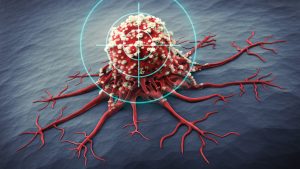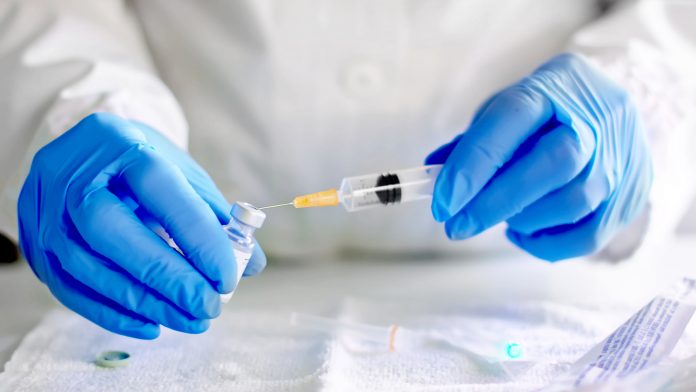Dr Matthew Wolf of the US National Cancer Institute (NCI) spoke to Innovation News Network’s digital editor, Caitlin Magee, about the use of biomaterials in cancer treatment.
Matthew Wolf, PhD, is an investigator at the National Cancer Institute (NCI) researching biomaterials in cancer treatment. His latest work assessed the use of immunomodulatory biomaterials to augment cancer immunotherapy. Wolf spoke to Innovation News Network about the use of biomaterials in cancer treatment and diagnosis.
The use of biomaterials in anticancer therapeutic
In the last 10 years, there has been an explosion in research into biomaterials applications for cancer therapy. One of the earliest clinical examples is in controlled drug delivery. We know that chemotherapy drugs are toxic with a very narrow dosing range. The amount of drug per treatment must be high enough to remain effective over time (since the body quickly excretes it), but not too high that side effects from the initial spike in the blood becomes intolerable or even dangerous. By encapsulating the drug into a biomaterial that more slowly and evenly releases it over time, you can maintain concentrations above a therapeutic level without a side effect-inducing spike.
Nanoparticles, liposomes, and solid ‘wafers’ are good examples of FDA approved biomaterials for chemotherapeutic drug delivery. For example, a nanoparticle is loaded with the drug, administered to the patient, and then maintains drug levels over a longer period of time than the free drug would. Solid biomaterial wafers made of degradable polymers are another example and add a dimension of spatial control. Rather than infusing into the blood, the drug loaded wafer is implanted where a tumour was removed. The drug is released as the biomaterial slowly degrades, hopefully killing any nearby cancer cells that were missed during surgery. The advantage here is that drug concentrations are very high near the implant (and thus near the left-over cancer cells), and relatively low in the blood thus avoiding many side effects.
There are many more approaches currently being developed in animal studies and in clinical trials. Biomaterial-based delivery systems are being applied to new drug classes, such as monoclonal antibodies and gene-delivery, and the biomaterials themselves are becoming ‘smarter’. Smart biomaterials are responsive to their environment and can be designed to release drugs while within a tumour. For example, advanced tumours often have an acidic pH compared to the rest of the body. Polymer nanoparticle encapsulating drugs are being designed to ‘open’ their structure at a low pH environment of the tumour thus releasing the drug. So even though the nanoparticles are delivered to the whole body, the drug is only released in the tumour. This prevents other tissues and organs from being exposed and reduces toxicities as well as side effects.

Applying biomaterials to cancer immunotherapy
Cancer immunotherapy is one of the primary areas of growth in biomaterials research that I am most interested in. Immunotherapy is about precision – you are convincing the immune system to reject cancer, which requires a targeted approach using more sophisticated types of drugs like antibodies and cytokines. Analogous to chemotherapy, biomaterials are used to deliver immunotherapy drugs such as immune checkpoint inhibitors (PD-1 targeting antibodies for example) with the goal of prolonging release and reducing the number of administrations.
Another exciting area of research is in biomaterials-based ‘cancer vaccines’ to train the immune system to recognise an existing tumour like how traditional vaccines train the immune system to recognise a virus. Several different biomaterial formats, such as polymer scaffolds, hydrogels, and nanoparticles are under investigation to deliver cancer vaccine components and enhance immune stimulation against the cancer.
Continuing with the theme of drug delivery, the biomaterial acts to concentrate and prolong exposure to the cancer vaccine enabling greater immune activity. In the case of biomaterial scaffolds, remember that every implant initiates inflammation. This inflammatory response includes immune cells that are very important to an effective vaccine response, such as dendritic cells. Therefore, the biomaterial scaffold both delivers immune stimulating compounds and acts as an immune stimulator itself in a synergistic fashion.
There are many more examples out there than these. The complexity of the immune system has driven innovative biomaterials approaches. Analogous to tissue engineering scaffolds, there are CAR-T cell scaffolds where CAR-T cells are seeded onto scaffolds designed to promote their survival and induce proliferation when implanted near a tumour. Other examples include artificial immune cells, which are biomaterial microparticles modified with immune cell-mimicking molecules on the surface. These immune receptors and ligands interact with immune cells to provide anti-tumour activating signals.

Biomaterials to improve cancer detection
The most frequently used clinical applications are as contrast agents for imaging tumours, using techniques such as MRI or CT scans. Again, biomaterial nanoparticles have several advantages. Their composition can be adjusted to provide different types and degrees of contrast for imaging, and to prolong retention in the body.
Importantly, cancer cell-binding molecules can be chemically attached to the surface of the particle. These enable the nanoparticles to selectively bind to and accumulate around cancer cells making them easier to detect with imaging.
It’s not only about nanoparticles though. A recent study in mice took a unique approach and used an implantable biomaterial disc as a sensor for tumour formation. This takes advantage of the universal truth that every implanted biomaterial initiates an inflammatory response of some kind. In this case, they found that the body-wide changes that occur during cancer also affects the natural immune response to the biomaterial. By taking a biopsy of the implanted biomaterial, they could determine whether cancer was growing anywhere else. Importantly, their data suggests the changes are more sensitive than blood sampling aka liquid biopsy so the immune response to the biomaterial seems to amplify the signal.









